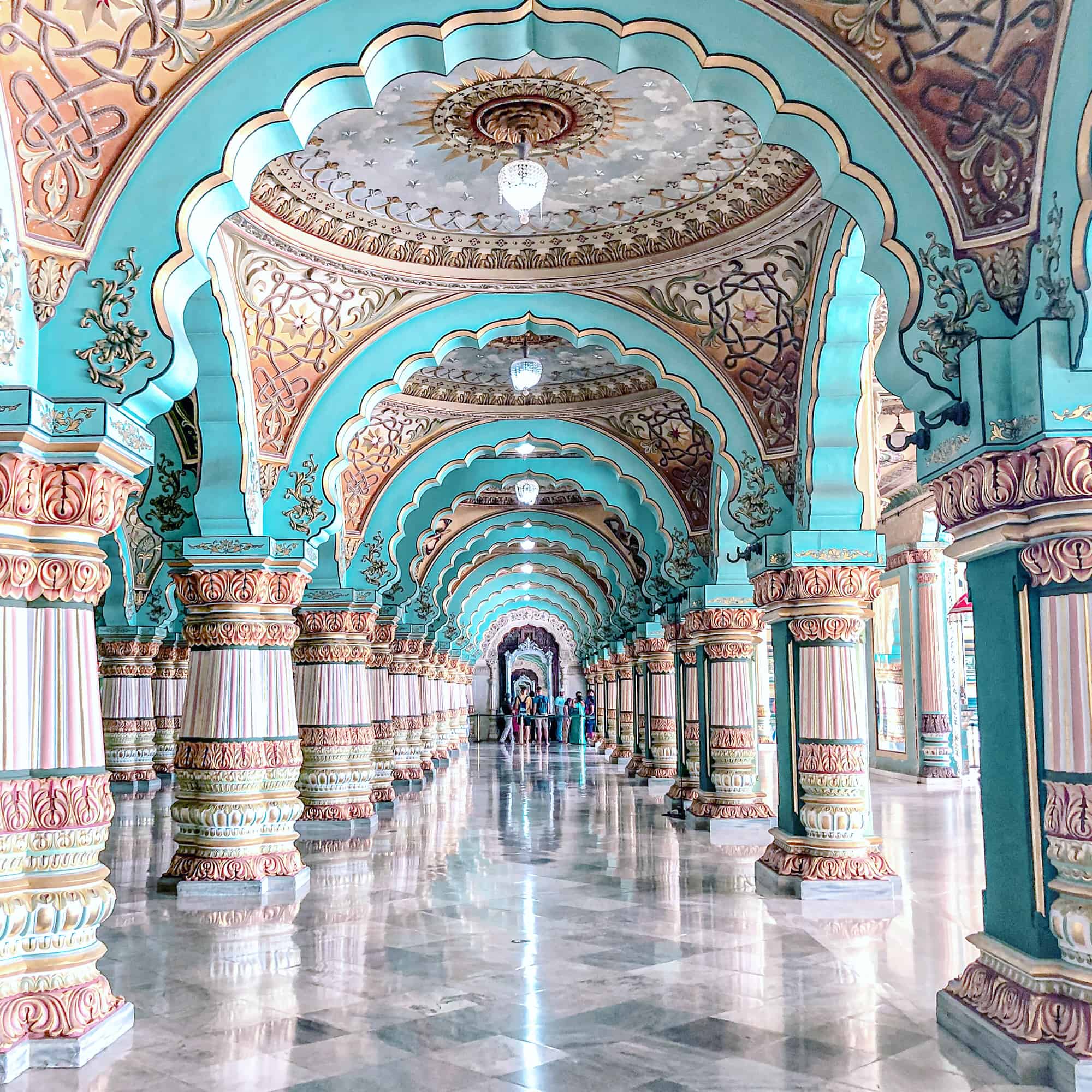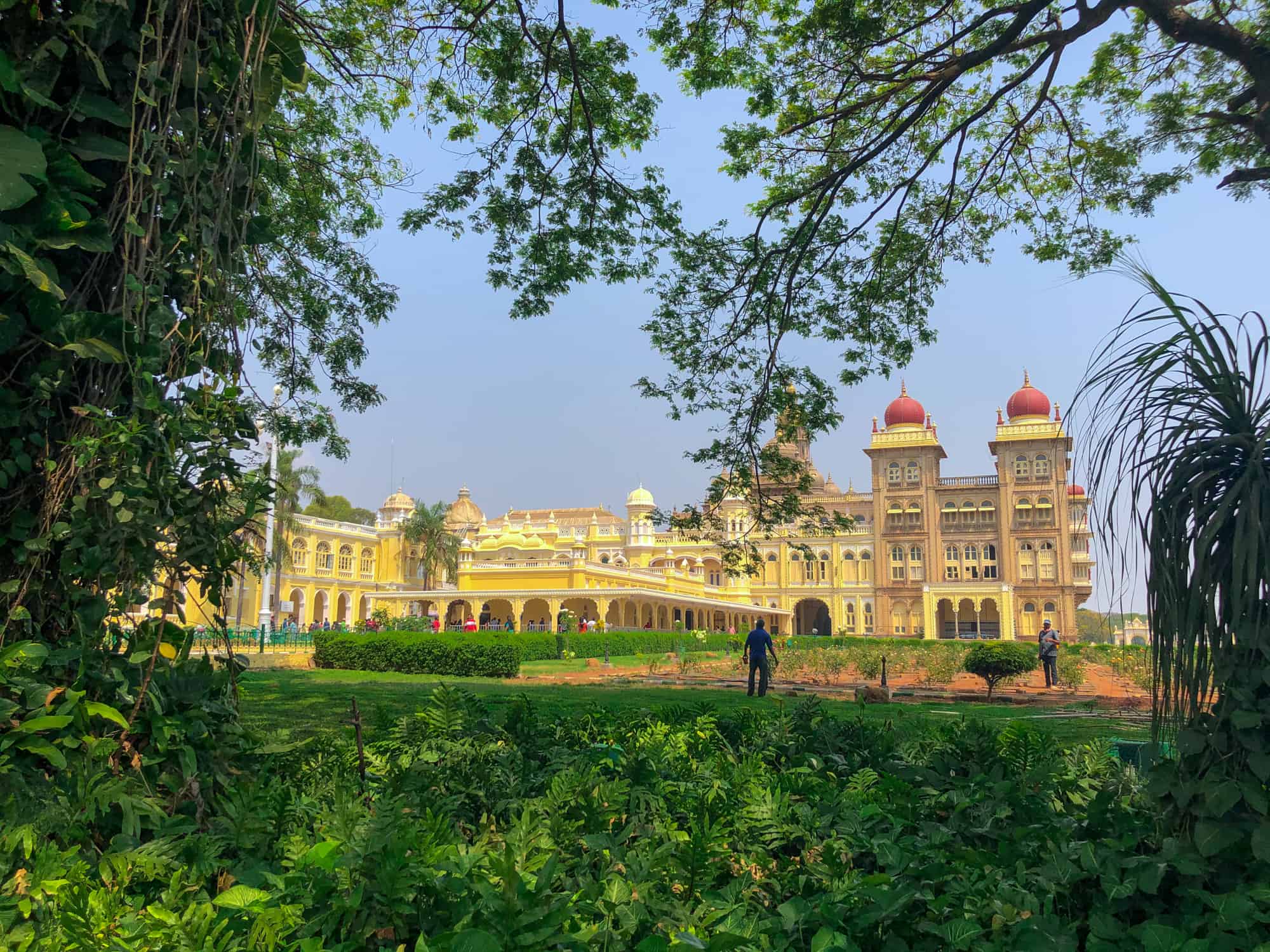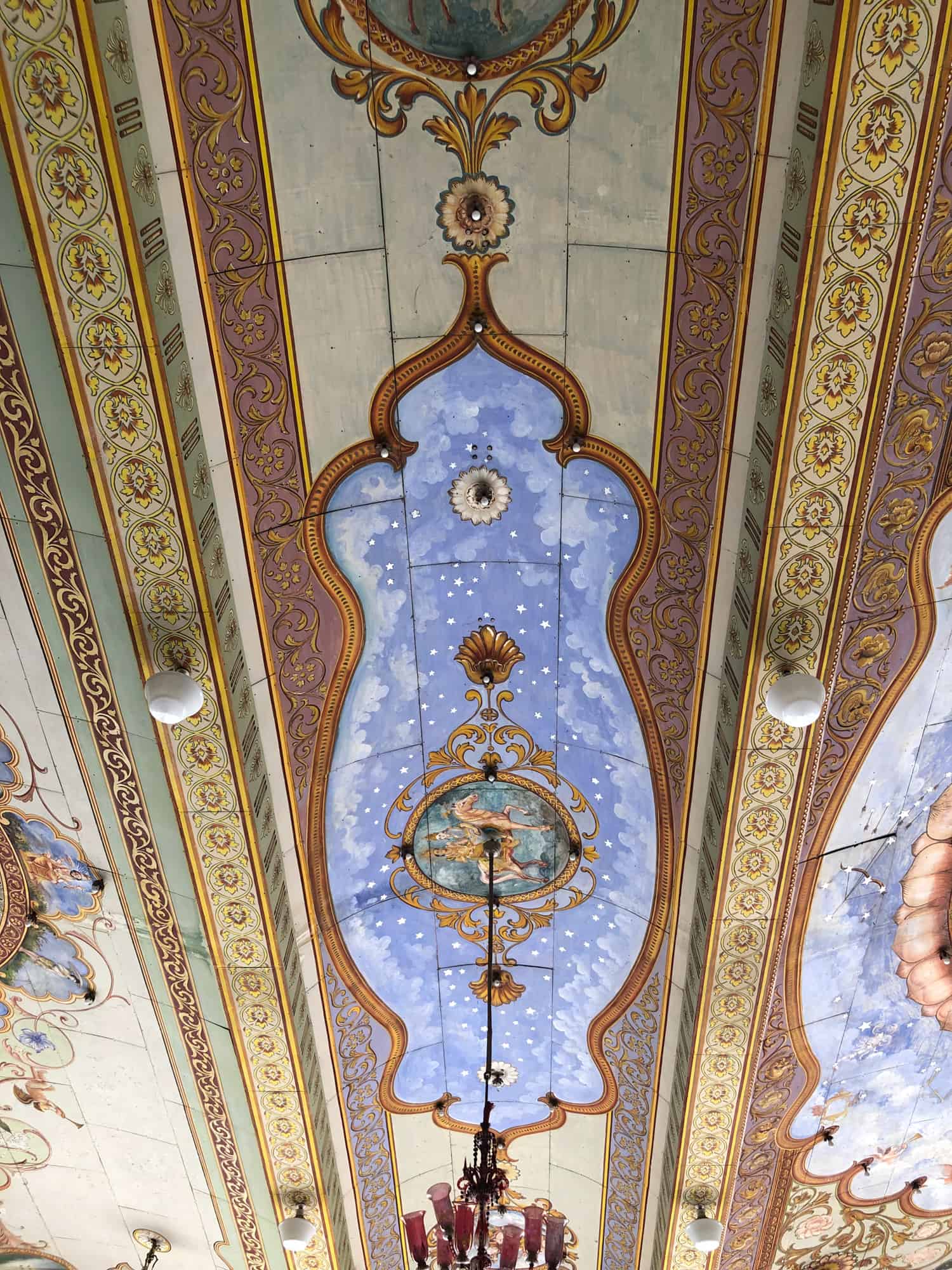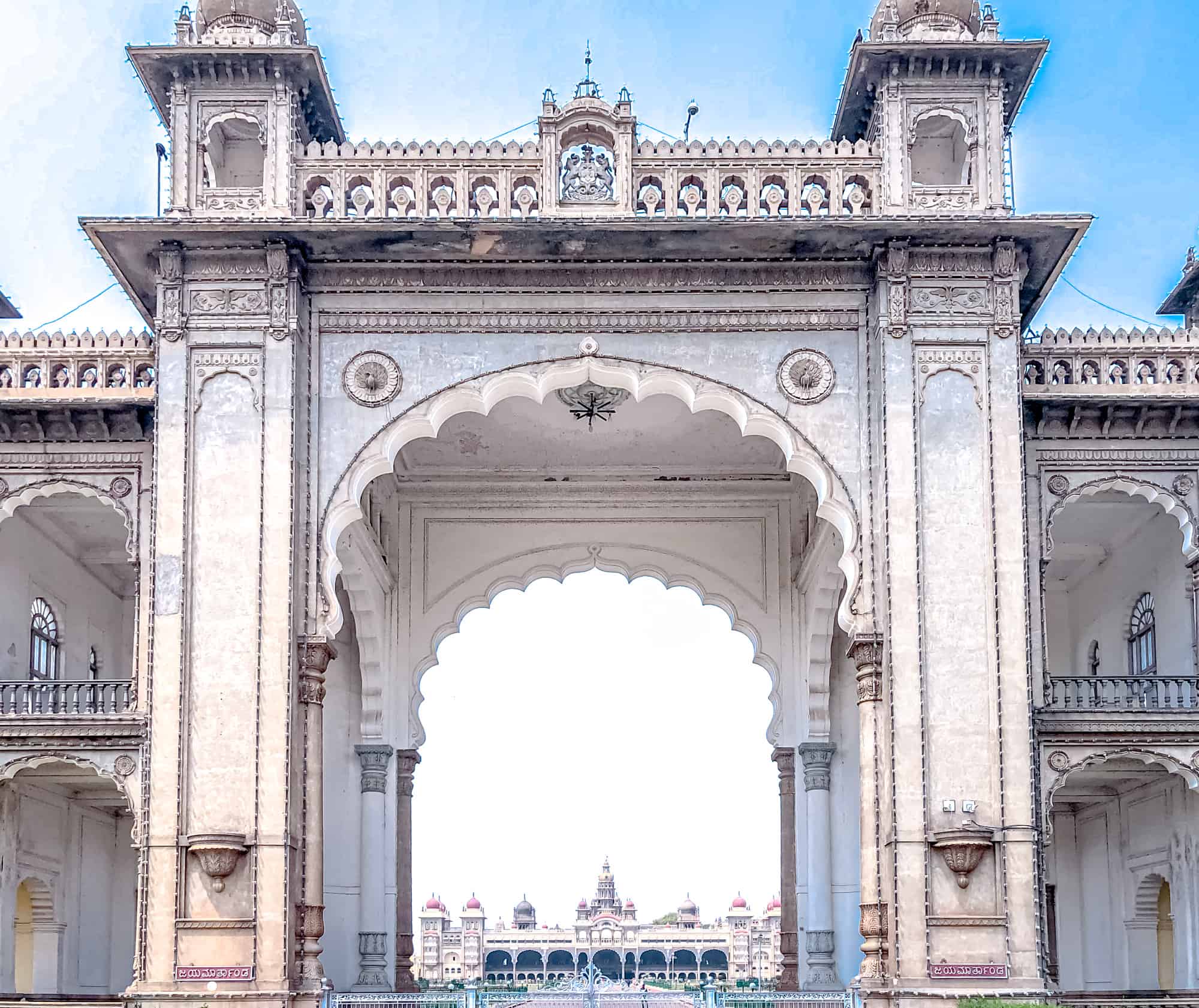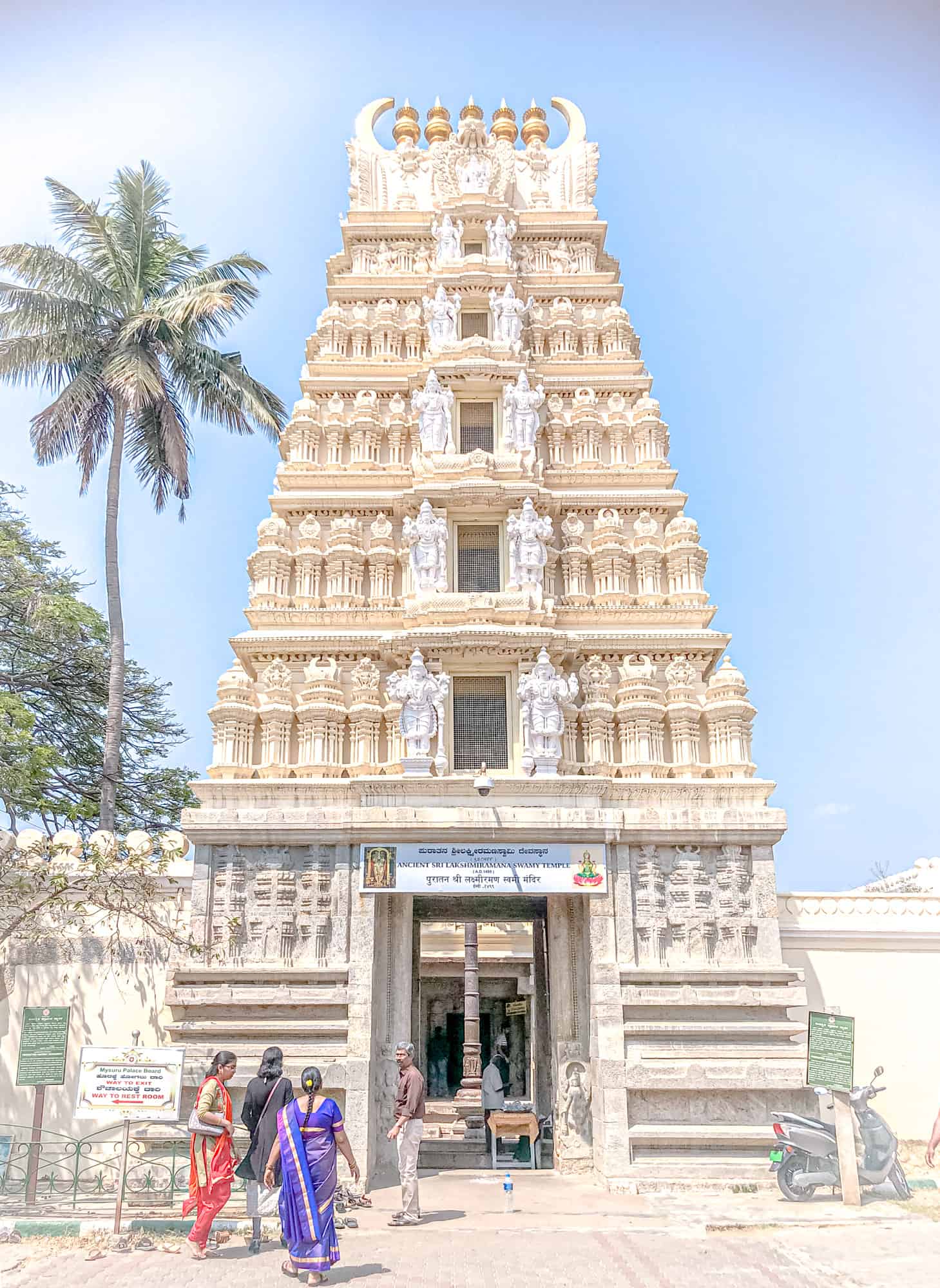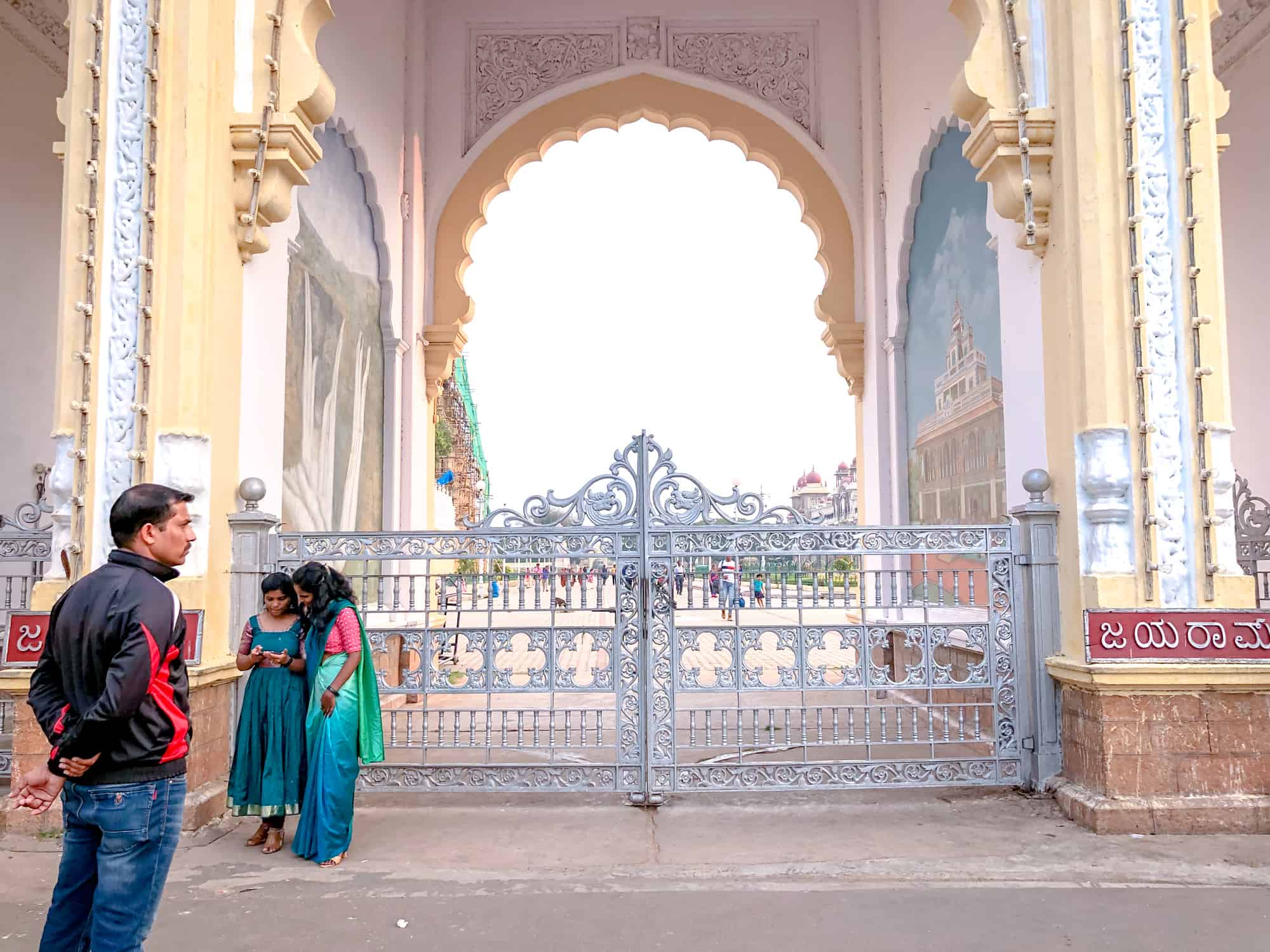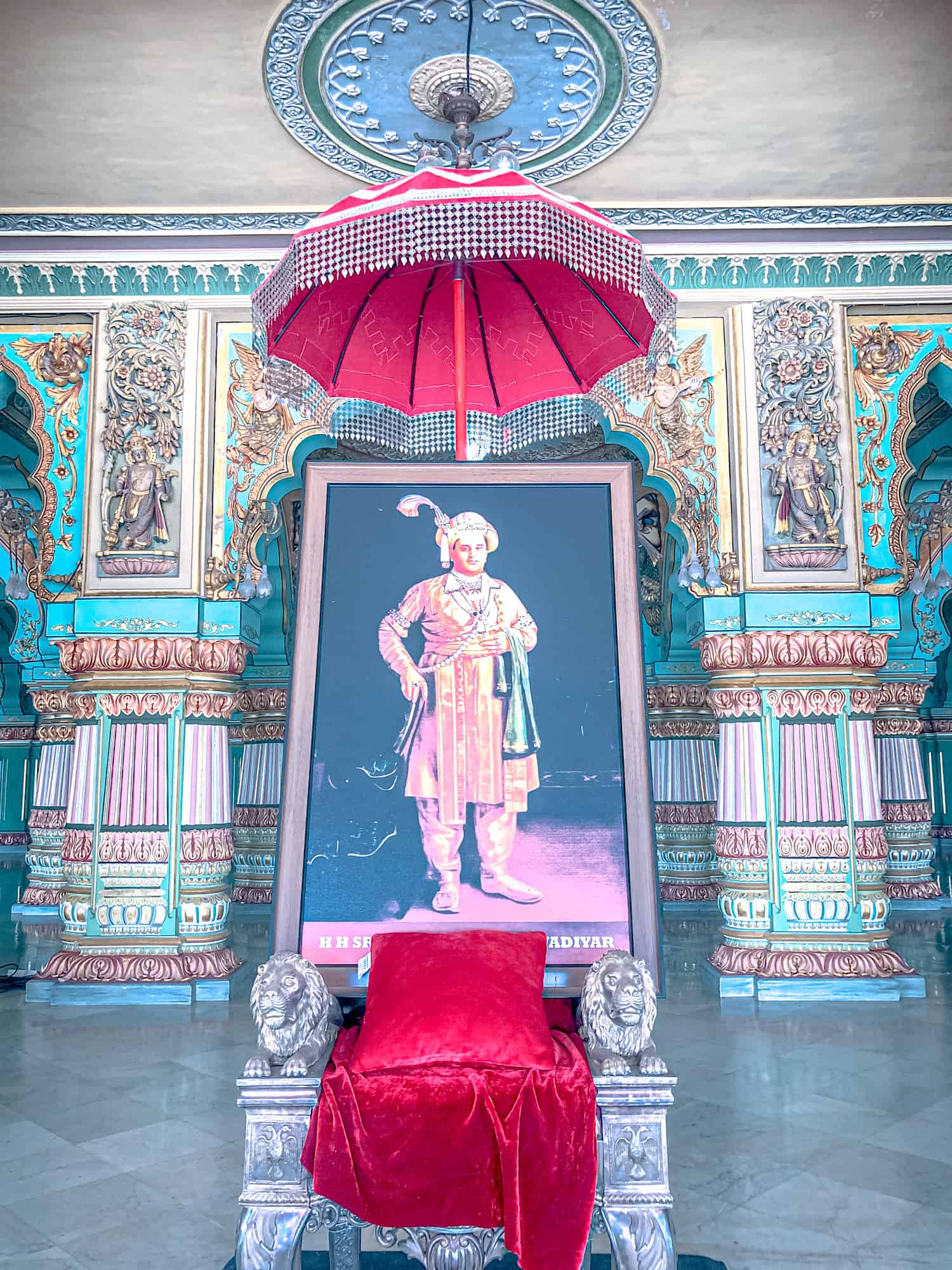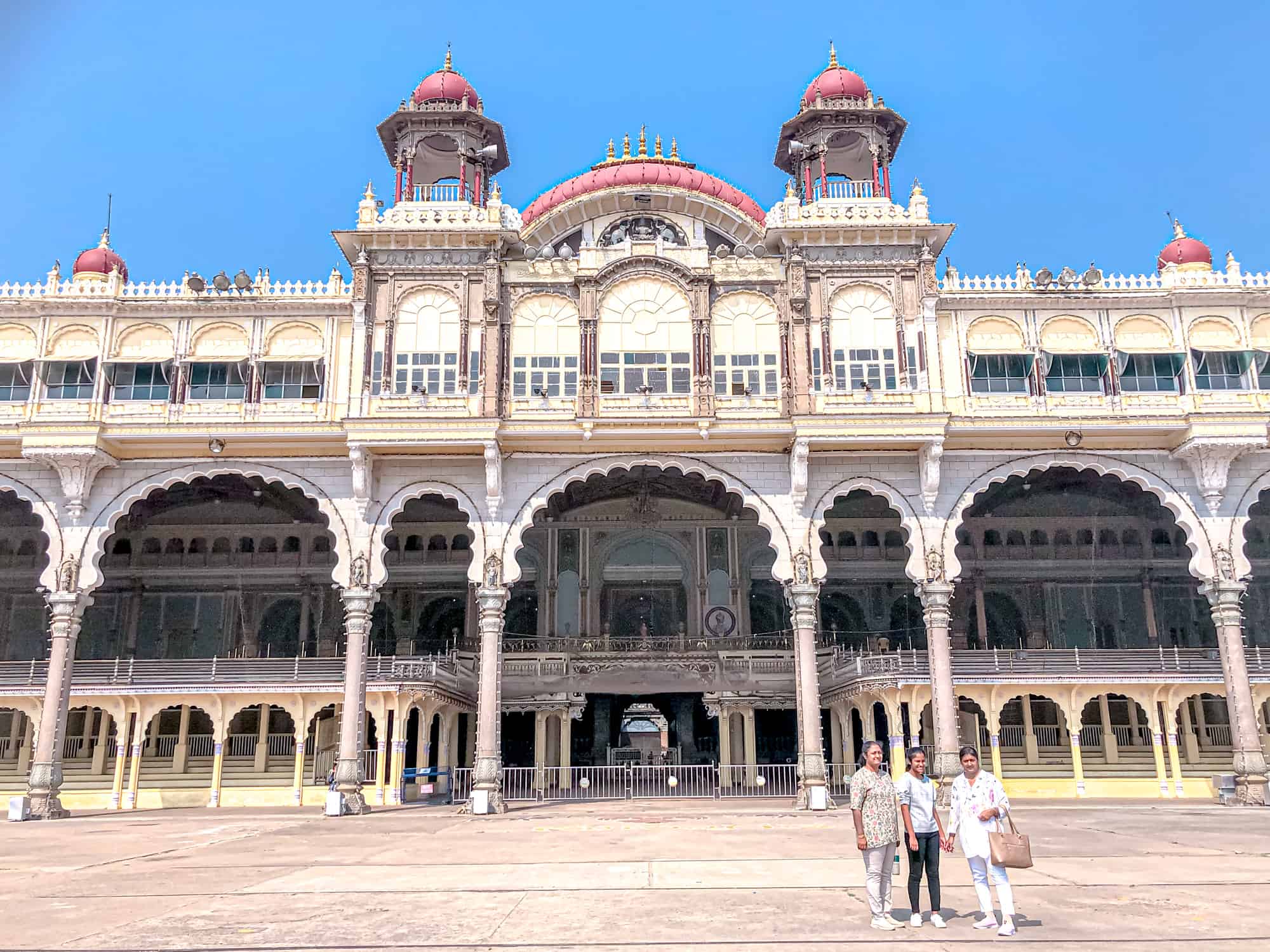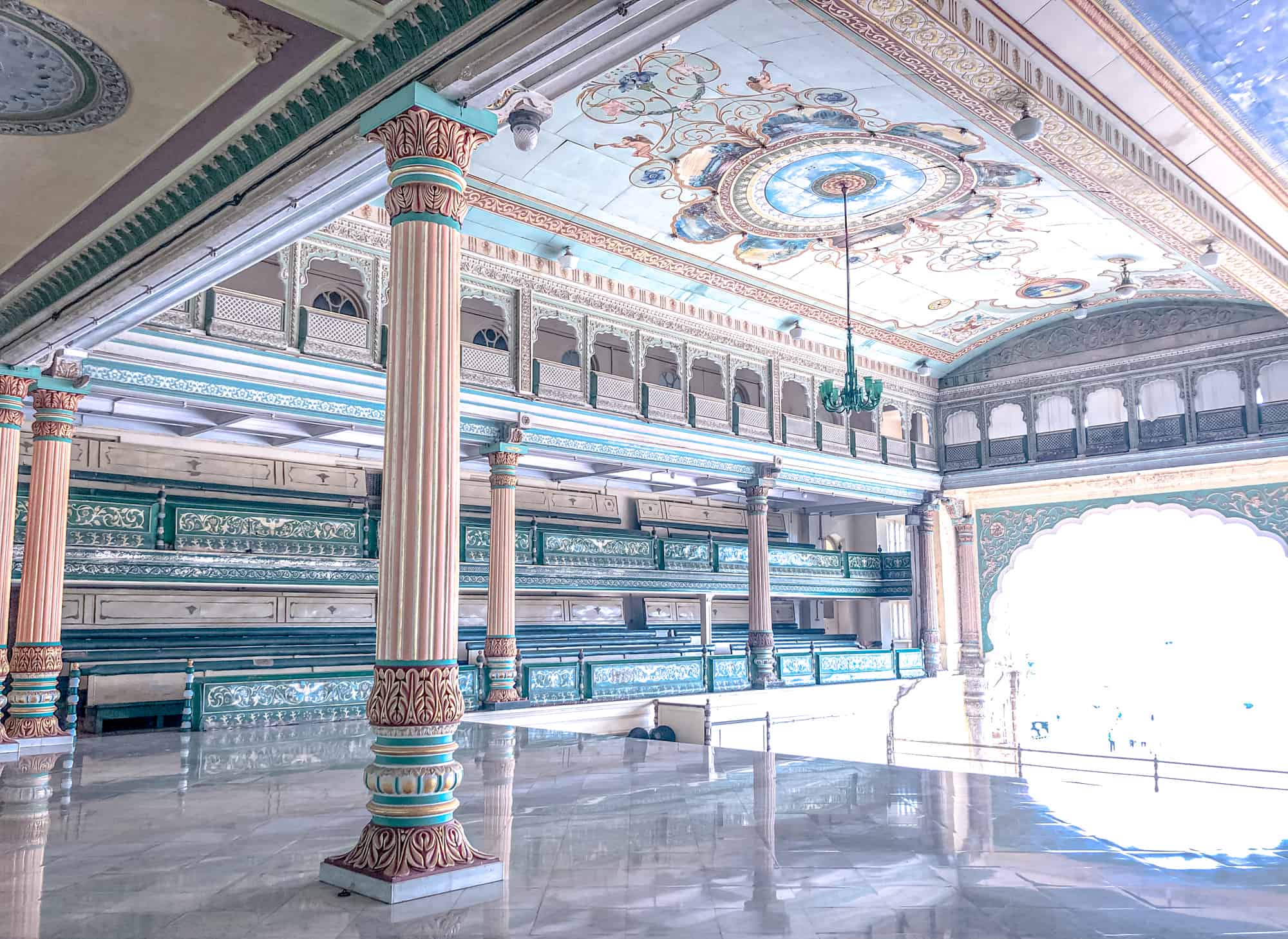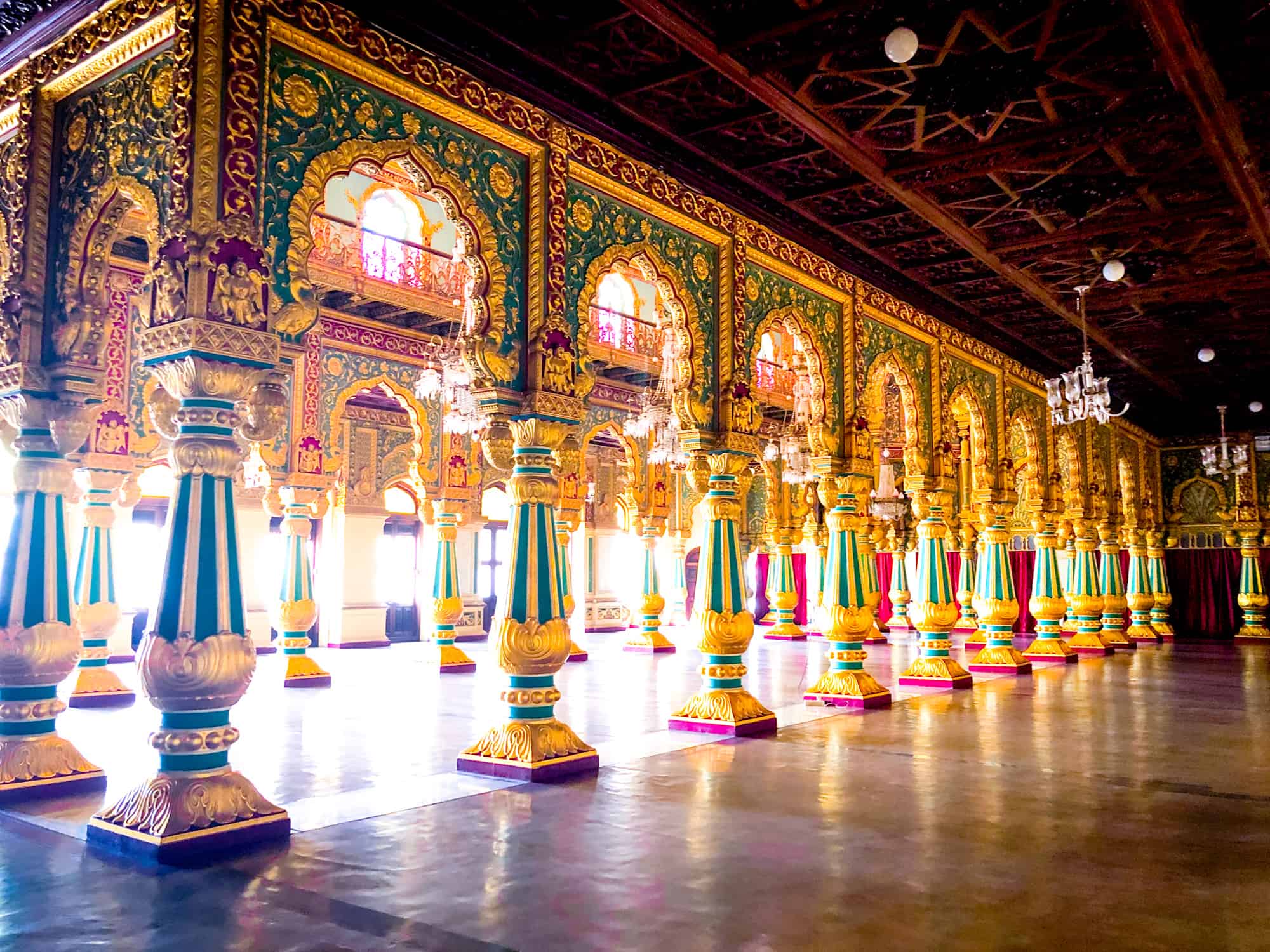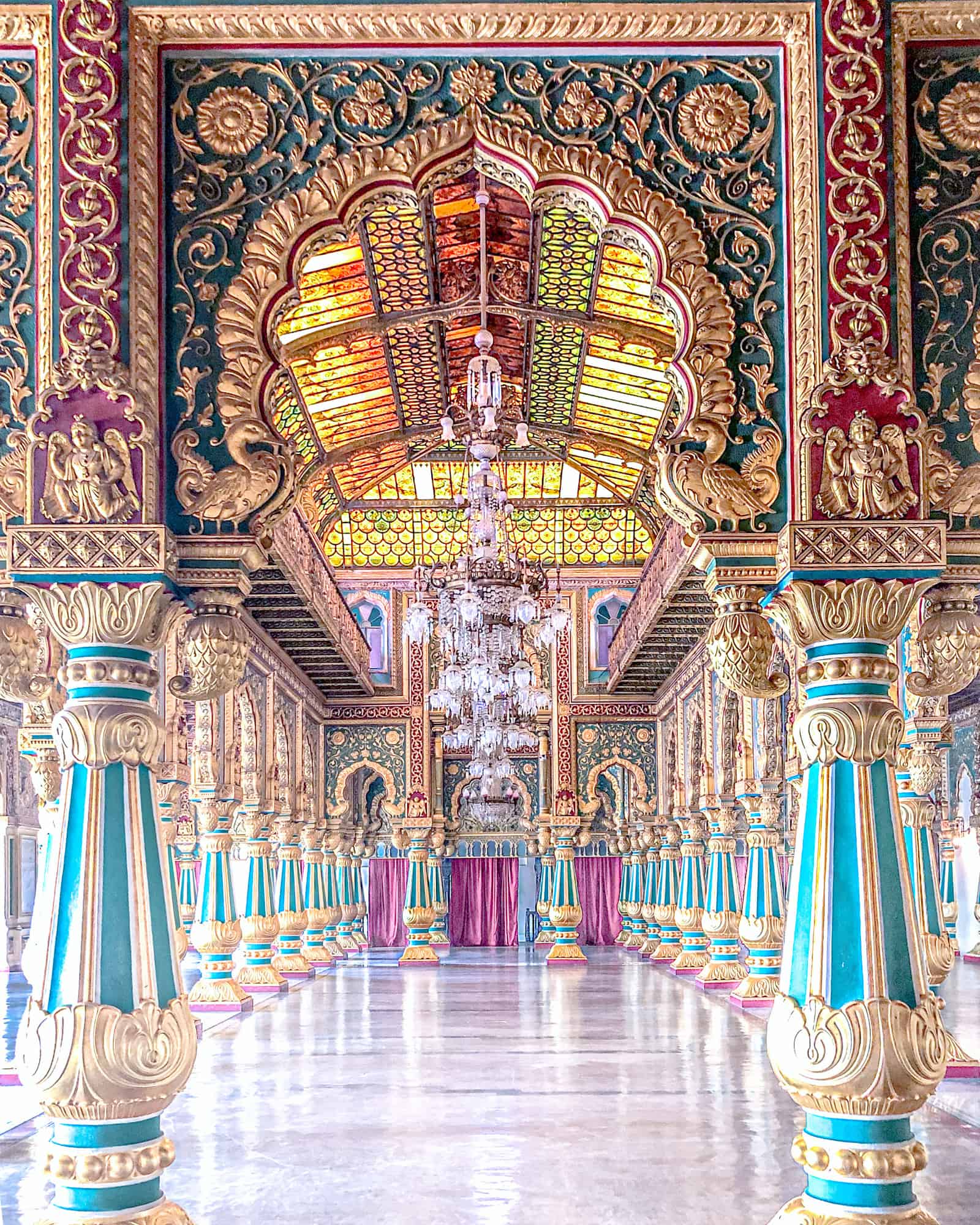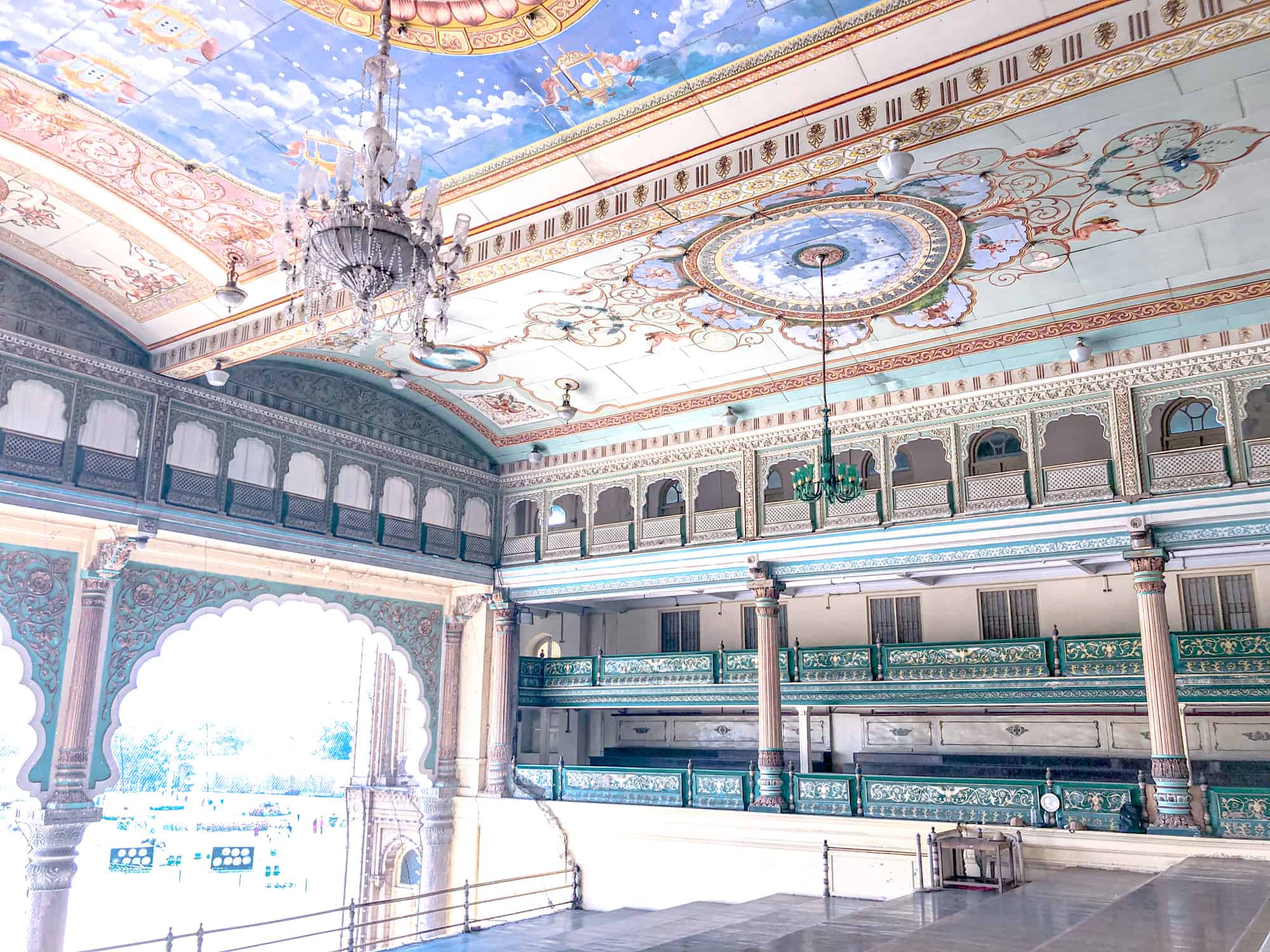Mysore stands out in Karnataka, southern India, for the silhouette of its landmark building and the blue-pink skies that hang over its landscaped gardens. But whereas the food in Mysore will leave you satisfied, Mysore palace history will leave you wondering more…
- Check out this article on planning a trip to India
The Story of Mysore Palace
Mysore Palace is one of the most visited attractions in Karnataka, a state bounded by Kerala to the south, Tamil Nadu to the south east and the Arabian Sea to the west. But to the world, and even to those in the north of the country, its presence in everyday consciousness is lighter than a dream.
While schoolchildren the world over know about the Taj Mahal, Mysore Palace slips right under the radar. Well, apart from the six million or so visitors who do visit each year.
Perhaps it’s a question of youth. Mysore Palace was only completed in 1912 after all. But the palace itself and the stories it tells stretch back much, much further than that.
Mysore Palace History
To understand Mysore Palace History, you first need to close your eyes and travel back to the jasmine-scented 14th century when a puragiri or citadel stood here instead.
The first version of the Mysore Palace suffered some serious bad luck. In 1638, lightning struck, leading to a rebuild by Kantirava Narasa Raja Wodeyar of the Wodeyar dynasty.
Things didn’t go much better in 1704, when the Wodeyar dynasty grappled with political instability and decent palace upkeep and basic home maintenance was the last thing on anyone’s mind.
Where is Amba Vilas Palace?
You’ll also here Mysore Palace referred to as Amba Vilas Palace. And see Wodeyar also spelled as the Wadiyar dynasty.
The Mighty General: Tipu Sultan
It’s around this time that Tipu Sultan, the son of Hyder Ali, enters the picture. You’ll hear his name a lot around the Chamundi Hills and the state of Karnataka. in the style of Russell Crowe in Gladiator, he was a general in the king’s army who went on to become the ruler of Mysuru.
In 1793, he demolished the faded remnants of the Mysore Palace, ready to start again. But just six years later, when he died, power returned to the Wodeyar family.
Krishnaraja Wodeyar III became king, suffering the indignity of a coronation beneath a marquee. Luckily, as a five year old, he probably didn’t notice.
However, his advisors quickly set to work, commissioning a new palace with a pacy completion date of 1803.
Alas, build in haste, repent at leisure. This latest version of the palace deteriorated steadily before going up in smoke during the wedding of Princess Jayalakshmmanni in 1897.
And then the story becomes a little more international.
The British Involvement in Mysore Palace History
Queen Regent Kempananjammanni Vanivilasa Sanndihana commissioned the prominent British architect Henry Irwin to build a new palace. One that would showcase the legacy not only the 600 years of Wodeyar royal family rule but also the importance of the city of Mysuru itself.
And that’s the palace you see today. The palace was built, or rather completed, in 1912, with a final cost of Rs. 41,47,913. It’s widely considered to be a masterpiece in Indo-Saracenic architecture and, well, looks resplendent during the day and better yet lit up at night.
But in all this talk of the Mysore Palace history, we’ve skipped an important part. The beginning and end of the Wodeyar dynasty. How did “provincial chieftains” become one of the most powerful families in India? And how did it this power end?
How the Wodeyar Family History Began
It begins, as all fairy tales do, with a damsel in distress, and a princess at that.
Two Indian brothers, both princes, were travelling from Dwaraka, in the Northern State of Gujarat, on a pilgrimage to Mysuru.
They heard tale of the terrible fate of the nearby Princess Davajammanni. Her father, the king of Mysuru had died and an evil Chieftain, from neighbouring Karagahalli, was attempting to marry the princess and take Mysuru by force.
But princes do what princes do. They rallied their troops, killed the Chieftain and rescued the princess. She then married the elder of the two brothers, Yaduraya, who became the first ruler of the Wodeyar dynasty. As you do.
That all took place around six hundred years ago, but it took until the 16th century for Mysuru to transform from a feudal principality into a fully fledged kingdom.
After victory over the declining Vijayanagar Empire, Maharaja Raja Wodeyar shifted his capital from Mysuru to Srirangapatna (where you can also find Tipu’s Fort) and revived the colourful Dasara festival.
And there we pick up again with the history of the Mysore Palace itself.
So that’s the story of the beginning. But how did the dynasty come to an end?
The End of the Maharajas
When India achieved independence from colonial Britain in 1947, it abolished the monarchy both at home and abroad. And the chapter of history of the maharajas of Mysore came to an end.
Mysore Palace Illuminations
Mysore Palace dazzles at night in the 21st century, but back in 1912, when most people still didn’t have electricity, can you imagine how impressed people would have been?
Over 97 000 electric light bulbs are studded into the walls and walkways of the palace grounds and you don’t even need to wait for a major festival to see them.
Flares light up the sky every Sunday, as well as on Public Holidays and during the Dasara Celebrations.
Apparently, the first lightbulbs had silver filaments but the temptation proved too great for locals and they kept disappearing… The solution was to design lightbulbs that wouldn’t fit into standard Mysore lightbulb sockets. A practice which, according to legend, continues to this day.
What are the Dasara celebrations?
Dasara represents the celebration of good over evil. It takes place on the 10th day of the bright half (Shukla Paksha) of the month of Ashvin (Ashwavuja) or around mid to end October to get your bearings.
As a major Hindu festival, it’s typically a bank holiday and schools close.
In Mysore, processions take place for the goddess Chamundeshwari, who sits on a throne borne by elephants and which passes by the palace.
What You Need to Know About Visiting Mysore Palace
You can spend around half a day exploring the inside of the Mysore Palace. You have to leave your shoes outside the entrance to the interior in a ticketed system and so it seems a little strange to walk amid such grandeur in bare feet. Queues are long but they move fast; it’s more of a stately procession through the interior buildings.
Outside, you can take your time in the grounds, stalls and temples. Once within the palace grounds, you’re also relatively protected from touts and tuktuk drivers so it is possible to feel a sense of peace in contrast to the sensory overload of the streets outside.
Inside Mysore Palace
The whole experience is a visual feast, but look out for these highlights amid the intricate doors, the golden howdah or elephant seat and the jewel-encrusted throne.
The Marriage Pavilion or Kalyanamantapa
This spectacular octagonal room includes 26 paintings of the local Dasara celebrations based on photographs and created around the early 1940s.
Weddings, birthdays and other ceremonies used to take place here beneath the domed, stained glass ceiling ablaze with strutting peacocks and floral mandalas. You’ll even find peacocks strutting across the glazed tiled floor, reflecting the glittering lights from the hanging chandelier.
Like much of the palace, you’ll see a blend of local and British influence. Local artists designed the glass patterns, but the manufacturing took place in Glasgow, Scotland.
History fans can spot even more details inside: the birthday procession of Krishnaraja Wadiyar IV, the Durga Pooja or Ayudha Pooja on the southern wall and the festival of Goddess Chamundeshwari and the celebration of Krishna Janmastami on the western corridor.
Look out for carvings on the columns just outside the room of two of the greatest Hindu stories from ancient India: the Mahabharata and the Ramayana.
The Durbar Hall
This magnificent aquamarine hall was designed to impress. And impress it does. With one face open to the courtyard below, the Durbar Hall allowed the Maharajas to address the crowds during public gatherings and to enjoy the view of the distant Chamundi Hills.
Thinking about Mysore Palace History
So what is the lesson to learn from the Mysore Palace history?
If at first you don’t succeed, try, try again and don’t let anyone stop you?
Or do you see a different message?
More on Travel in India
- Why everyone needs to know about the history of Mysore Palace
- Your hand-picked 24 hours in Mumbai itinerary
- The perfect 7 day Kerala itinerary
- Check out our in-depth guide to planning a trip to India here.
- What makes the Bangalore flower market special
- Your Mysore Food Guide: the dishes you need to know

